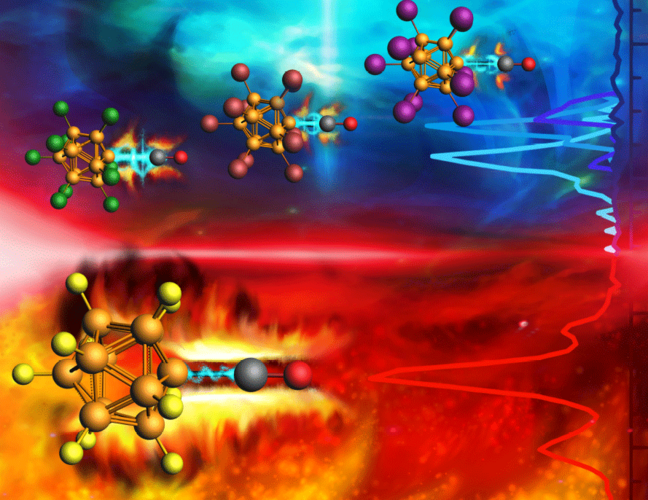Electrophilic anions of type [B12X11]− posses a vacant positive boron binding site within the anion. In a comparatitve experimental and theoretical study, the reactivity of [B12X11]− with X=F, Cl, Br, I, CN is characterized towards different nucleophiles: (i) noble gases (NGs) as σ-donors and (ii) CO/N2 as σ-donor-π-acceptors. Temperature-dependent formation of [B12X11NG]− indicates the enthalpy order (X=CN)>(X=Cl)≈(X=Br)>(X=I)≈(X=F) almost independent of the NG in good agreement with calculated trends. The observed order is explained by an interplay of the electron deficiency of the vacant boron site in [B12X11]− and steric effects. The binding of CO and N2 to [B12X11]− is significantly stronger. The B3LYP 0 K attachment enthapies follow the order (X=F)>(X=CN)>(X=Cl)>(X=Br)>(X=I), in contrast to the NG series. The bonding motifs of [B12X11CO]− and [B12X11N2]− were characterized using cryogenic ion trap vibrational spectroscopy by focusing on the CO and N2 stretching frequencies and , respectively. Observed shifts of and are explained by an interplay between electrostatic effects (blue shift), due to the positive partial charge, and by π-backdonation (red shift). Energy decomposition analysis and analysis of natural orbitals for chemical valence support all conclusions based on the experimental results. This establishes a rational understanding of [B12X11]− reactivety dependent on the substituent X and provides first systematic data on π-backdonation from delocalized σ-electron systems of closo-borate anions.
First joint publication of the Asmis, Tonner and Warneke groups
